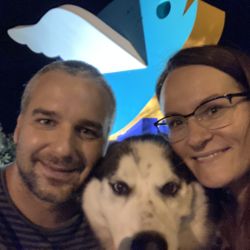Origins and Temperament
Hailing from the southern reaches of Africa, Rhodesian Ridgebacks have a storied past as vigilant hunters and loyal home guardians. This breed's poised composure and discerning nature make it a steadfast family member, capable of both independent thought and deep affection. Their historical roots as hunters require an attentive approach to travel, considering their alertness and sensitivity to their environment.
Size and Physical Needs
As a large dog breed, Rhodesian Ridgebacks typically weigh between 70 to 85 pounds, with a height ranging from 24 to 27 inches. Their robust physique insists on ample room to stretch and move during transport. Renowned for their athleticism, Ridgebacks demand regular exercise to remain content and avoid restlessness, making strategic activity stops a must on any itinerary.
Common Health Considerations
Rhodesian Ridgebacks can be susceptible to genetic conditions such as hip dysplasia and dermoid sinus. Ensure you have the latest health documentation, including vaccination records and preventative treatments for parasites, in preparation for travel. These records not only affirm health status but may also be a requirement for certain transit or destination points.
















